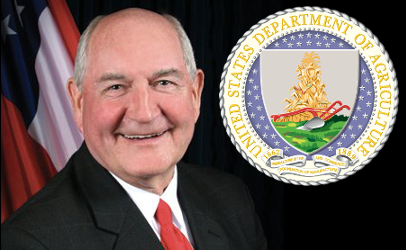Hog farmers are hurting.
COVID-19 has put a serious crimp in the U.S. economy and nowhere is that more evident than in agriculture. More specifically, American hog farmers are struggling to stay on farms because they’re having trouble getting their hogs to market. Big trouble, in fact. Hogs are so far backed up on the farm that producers may have a tough decision to make in the not-too-distant future.
Those of us in the agricultural media don’t often hear the word “euthanize” in press conferences. Unfortunately, it came up multiple times during a press conference hosted by the National Pork Producers Council. As prices for hogs have plummeted, Howard ‘A.V.’ Roth, NPPC President, says things are as bad as they’ve ever been after several years of a depressed farm economy.

“We are now an ag sector in dire crisis,” Roth said to reporters. “Farmers are already exiting the business and the damage will only intensify without direct intervention from the federal government.”
Speaking as a hog producer himself, Roth says the pork industry has a list of several things it needs in order to help keep as many farmers in operation as possible. The first item on their wish list would clear out a tremendous amount of stored pork supplies as quickly as possible, plus it would get food into the hands of people who need it.
“Over $1 billion in pork purchases by USDA to clear out a backed-up meat supply, while supplementing food bank programs around the country facing increased demand for food as unemployment continues to rise,” Roth said. “These purchases should come from packaged pork that was intended for restaurants and other segments of the foodservice market.”
In all the years I’ve covered agriculture, I can tell you from firsthand experience that farmers want to make their living from the markets, not government handouts. How desperate are pork farmers to stay in business?
“We need direct payments to producers without eligibility restrictions,” Roth says.
They’re also hoping to see China remove retaliatory tariffs on U.S. pork that are still in place despite the Phase One trade agreement between the two countries. Roth points out that it’s no secret China needs a reliable source of affordable pork after their herds were decimated by the African Swine Fever virus.
“Removing those damaging tariffs would get us back on a level playing field with our international competitors,” Roth says. “Dr. Dermot Hayes, an economist with Iowa State University, says removing those tariffs would allow U.S. exports to China to more than double their current volume.”
How badly does China need pork, one of the most preferred proteins in the Asian diet? Let’s just say that Chinese pork producers, who can’t ever hope to meet their country’s domestic demand, are enjoying some pretty high prices for their products right now.
“While Chinese producers are enjoying record pork values, U.S. producers are facing a dire decision on our farms,” Roth said. “Sadly, it’s true. Without significant assistance, euthanizing is a question that’s going to begin coming up on our farms.
“Let me be the first to say, as a pork producer, we care about our animals,” he added. “The last thing we ever want to do is euthanize even one animal. We’re going to do everything in our power to make sure that doesn’t happen.”
Producers may be able to at least push that decision back somewhat, thanks to a recent decision by the Environmental Protection Agency. Michael Formica, Assistant Vice President of Domestic Affairs and Counsel at NPPC, says hog housing restrictions have been temporarily relaxed.
“We reached out to EPA to ensure that if we were ever in a situation like the one we face now, producers would have an option to hold animals on their farm,” Formica said. “All of the farms are permitted to hold a certain number of animals. If they exceed those numbers, they have to go through new permitting.
“We asked EPA for a temporary waiver of the thresholds during the crisis we’re facing,” Formica said, “and thankfully, they granted that request a couple of weeks ago. That’s a tool that many farmers can use to hold animals on their farms while additional animals come through the pipeline.”
He says it’s important to point out that’s an advantage for farmers only if they have adequate additional space. If the backup continues indefinitely, they will run out of space and that’s when they have to start culling otherwise healthy animals from their herds, simply because there won’t be enough space to take care of them.
Why is it all piling up on hog farmers so quickly? Nick Giordano, Vice President of Global Government Affairs and Counsel for NPPC, says hog producers were the first to be hit hard by the trade war with China.
“Hog farmers were there at the tip of the Chinese retaliation spear,” he said. “Trade retaliation from two key markets, Mexico and China, in 2018 and 2019, took $20 off the prices that producers received for every hog.
‘Unlike a lot of the other segments in our economy that came into the COVID-19 outbreak with record profits and a full head of steam, our producers were already hurting. This has made a bad financial situation infinitely worse.”
How far have things fallen across the industry? Iowa State’s Dr. Hayes says in just one month, from March 10 to April 10, the pork industry has lost $5 billion in value. Something has to change.

